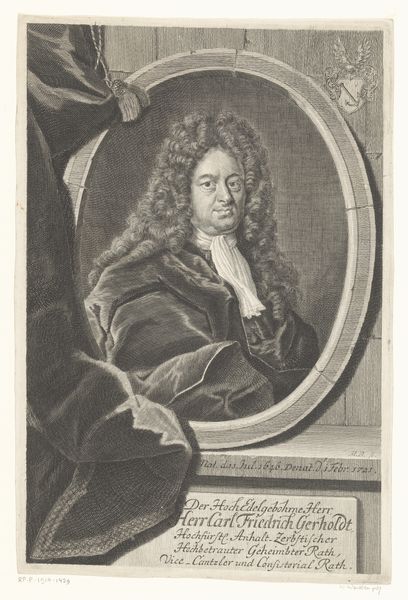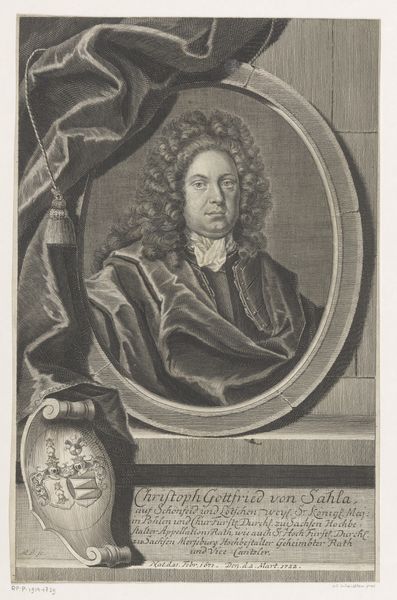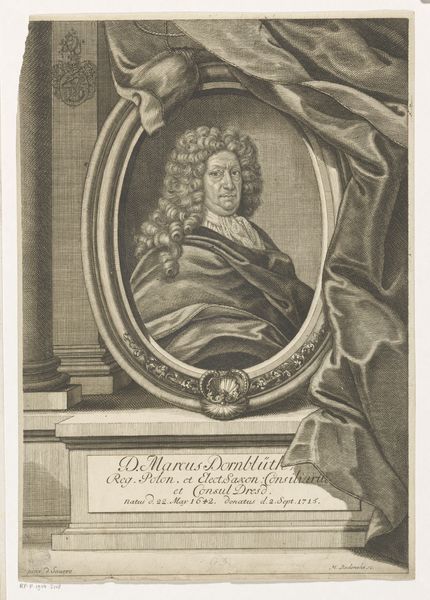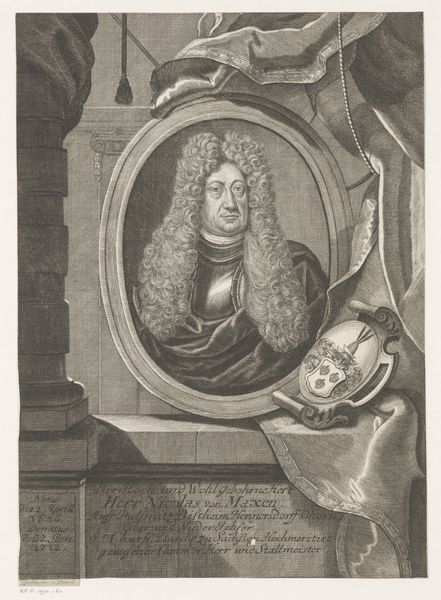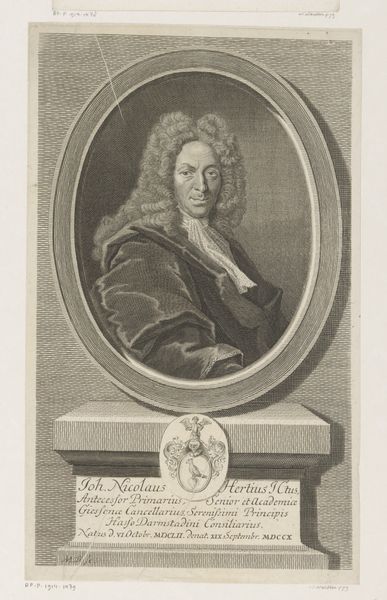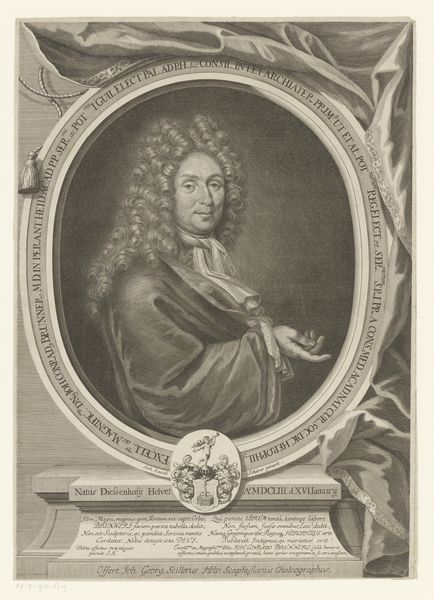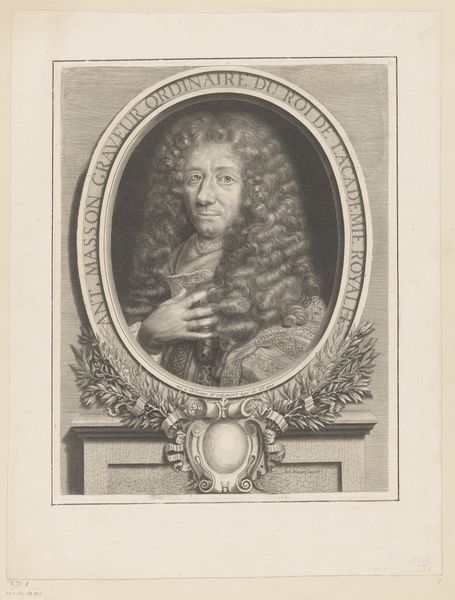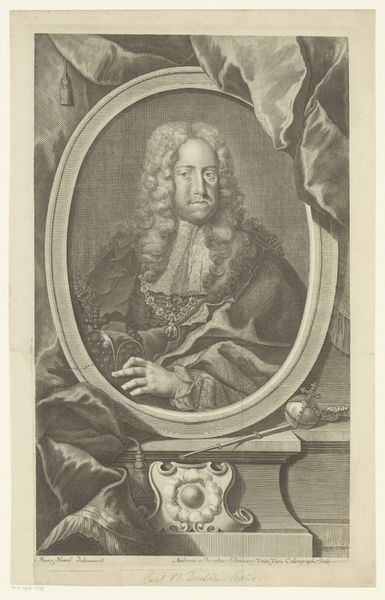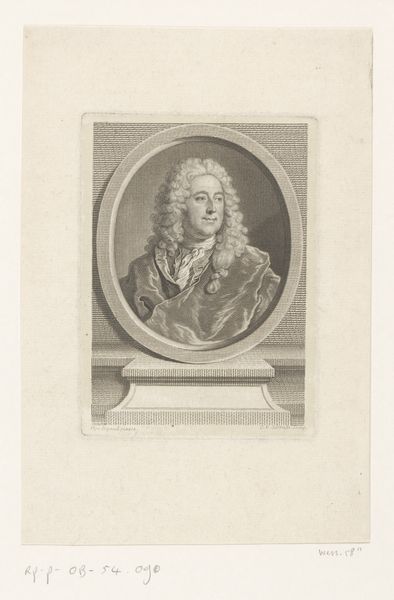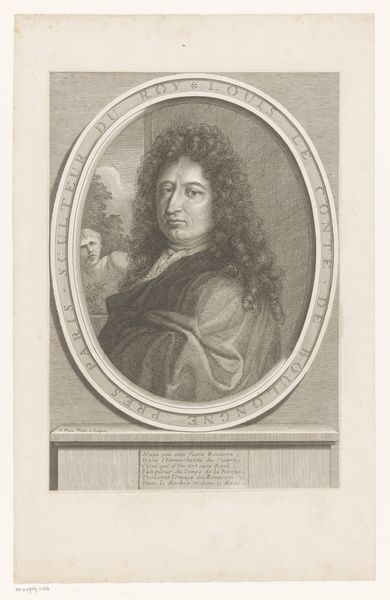
print, engraving
#
portrait
#
baroque
# print
#
old engraving style
#
pencil drawing
#
15_18th-century
#
history-painting
#
engraving
Dimensions: height 160 mm, width 102 mm
Copyright: Rijks Museum: Open Domain
Editor: So, this print, “Portretten van Mathijs Wulfraet en Augustinus Terwesten” by Jacob Houbraken, from 1753, is quite striking. The way the two portraits are stacked within their oval frames… It feels almost like a family crest, but for artists. What catches your eye when you look at this? Curator: Well, I see echoes of cultural memory etched within those lines. Notice the cascading drapery above the top portrait. Drapery has, for centuries, signified status, authority, even divinity. It frames Mathijs Wulfraet, perhaps subtly suggesting his importance or the perceived gravity of his profession, connecting him to a long lineage of portraiture traditions that use such devices. Editor: That's interesting, I hadn't thought of the drapery in that way. It seemed almost like a decorative element. So you think that the artist, or perhaps the patron, consciously chose these symbols to imbue the subjects with a specific meaning? Curator: Precisely. Even the oval frames themselves speak of Renaissance ideals, a deliberate harking back to a golden age. The question is, why evoke such imagery here? Were these artists considered inheritors of that tradition, carrying its torch? Consider also the gaze of Augustinus Terwesten; he looks out, engaging the viewer directly, almost inviting us into the artistic process hinted at by the palette and brushes at the bottom. Is that not an interesting contrast to the rather remote gaze of Wulfraet? Editor: It really is. Wulfraet seems almost detached, while Terwesten feels much more present, approachable. It’s almost as though we have been invited into Terwesten's studio to view these portraits, which is incredibly appealing. Curator: A deliberate construct, I'd wager, playing with ideas of artistic legacy, personal connection, and the evolving role of the artist in society. This work shows both an attention to contemporary cultural context and an echo of enduring cultural values, prompting an examination of memory, representation and artistic identity, all communicated through symbolic visual language. Editor: This has given me a whole new perspective. It's more than just a double portrait; it's a commentary on art history and the artist's place within it!
Comments
No comments
Be the first to comment and join the conversation on the ultimate creative platform.
